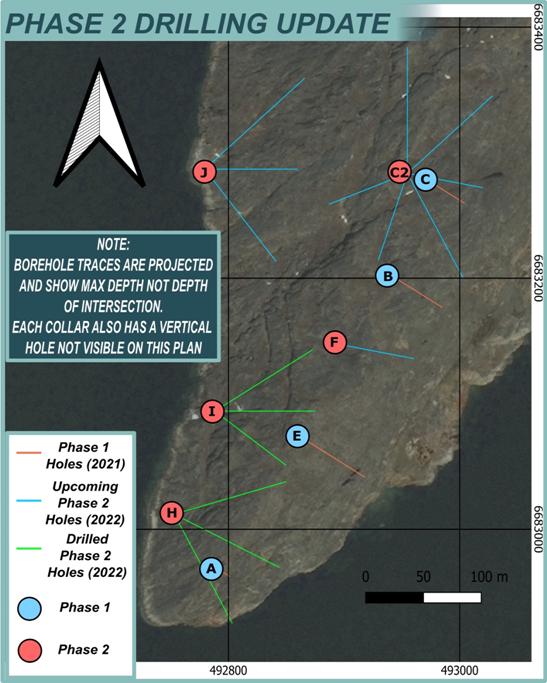Greenland-focused mining exploration and development company Greenroc Mining (GROC) said that Phase 2 drilling at it Amitsoq Graphite Project has essentially doubled the deposit footprint.
As of 14 August it has now drilled nine holes for a total of 1,360m, all of which have returned mineable widths. The company said that intersections in Phase 2 had been “at least as good” as those obtained in the first phase, confirming the “significant thickness” of both the upper and lower graphite layers.
All holes were found to have “at least one mineable graphite layer intersection greater than 5.25m,” and ore grades are similar to those in phase one, up to 23.01% Graphitic Carbon and 19.83% Graphitic Carbon, respectively, in the upper and lower layers.
The results suggest that Greenroc will be able to build on its maiden resource estimate of 8.28 million tonnes of 19.75% Graphitic Carbon at Amitsoq ahead of a planned feasibility study.
Greenroc CEO Stephan Bernsten commented: "These preliminary drill results are particularly exciting as most of the holes are placed further west of the holes drilled in 2021, suggesting a substantial extension to the graphite layers and indicating that the deposits are still open down-dip and to the northwest, west and southwest.
“Alongside this, we are currently drill testing the northern extension of the graphite layers, the results from which we look forward to sharing in due course. One final but very positive point is that the core is mostly very solid, which bodes well for stable mine construction as we look to advance Amitsoq to development status."

View from Vox
Graphite is a key metal in the production of electric vehicle batteries, and Amitsoq is one of the highest-grade graphite deposits in the world. As more than half of the exploration target area for Amitsoq Island has been undrilled, GreenRoc’s programme is focused on unlocking this resource potential.
GreenRoc’s technical work to date has confirmed that Amitsoq graphite can be upgraded to a more than 99.95% pure graphite product, which is the specification requirement for EV batteries. As a result, the company says it is well positioned to capitalise on the transition to Net Zero.
In a broader context, the demand for graphite is forecast to soar. UBS is estimating a natural graphite deficit of 3.7Mt by 2030, representing around 37% of the total global market. And according to Baker Steel, between 2020 and 2040, a 22-fold increase in graphite for energy technology demand is forecast, and a 10-fold increase across all applications, an increase second only to lithium.
Greenroc’s shares rose 2% on the news in a difficult day on the London market, and further drill results are expected in September.

